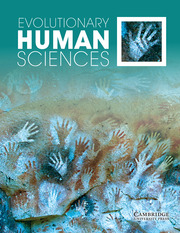No CrossRef data available.
Article contents
What are you looking at? Context and sex dependence of visual attention to faces
Published online by Cambridge University Press: 14 February 2025
Abstract
Perception studies describe numerous discrete morphological facial features as important to judgments of various characteristics. Interestingly, little is known about whether people actually direct their visual attention to these features and how specific contexts or sex affect this attention. We, therefore, examined visual attention to faces in the context of intersexual (opposite-sex assessment of attractiveness) and intrasexual (same-sex assessment of dominance) selection.
In total, 93 women and 33 men rated 80 high-resolution facial photographs of men and women while their gaze was recorded using eye-tracking. To explore patterns of raters’ attention to faces and specific facial features, we used the number of fixations, fixation duration, and visit duration as visual attention measures.
Women directed more visual attention towards the faces of potential partners (more fixations) than potential rivals, and men had longer visit duration when assessing potential partners than rivals. Facial features that acquired the most visual attention across contexts and sexes were the eyes, nose, and mouth, but small differences between the sexes and contexts in visual attention were found for other facial regions suggested by previous perception studies, such as the chin and the cheeks indicating their importance in specific judgements.
- Type
- Research Article
- Information
- Creative Commons
- This is an Open Access article, distributed under the terms of the Creative Commons Attribution licence (http://creativecommons.org/licenses/by/4.0), which permits unrestricted re-use, distribution and reproduction, provided the original article is properly cited.
- Copyright
- © The Author(s), 2025. Published by Cambridge University Press.


